Bear with me and beware of spoilers.
HALLOWEEN III: SEASON OF THE WITCH, a 1982 Horror film from Universal Pictures, recently celebrated its 35th anniversary. To many Horror fans that’s 35 years of either disdain at worst, or disregard at best. But why?
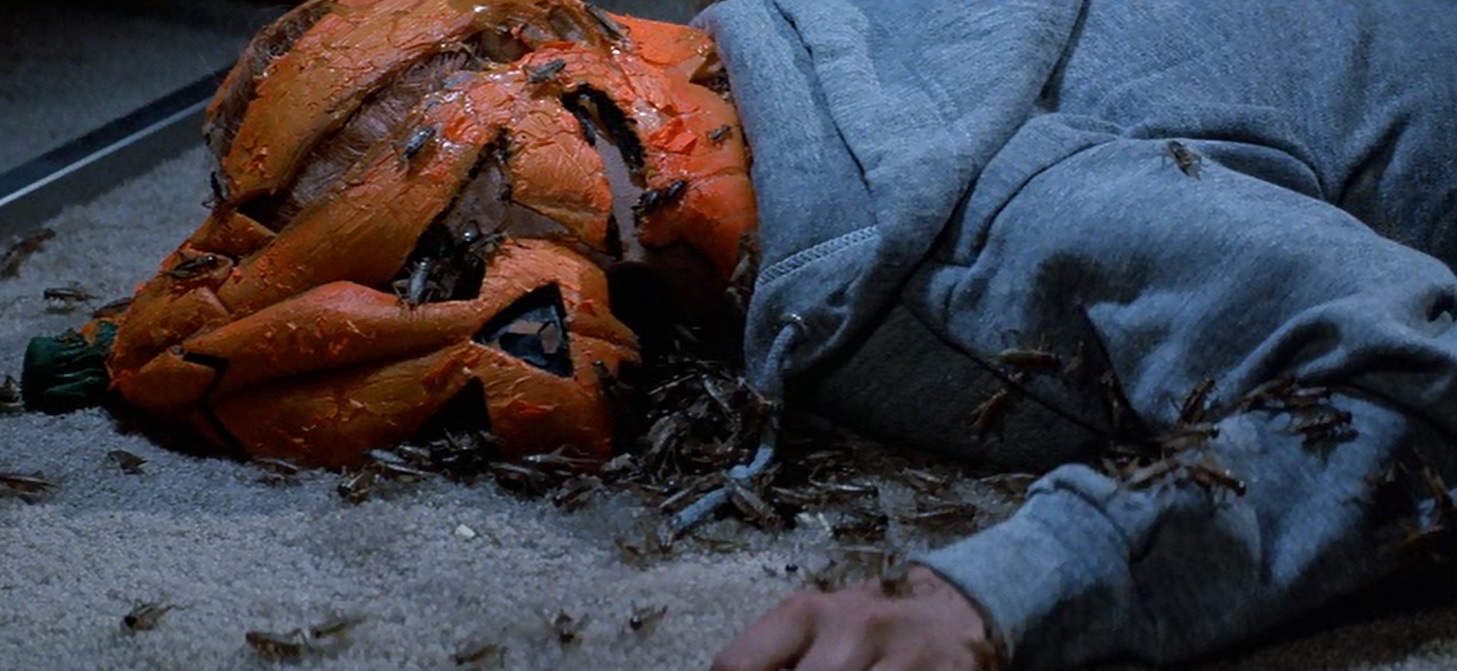
The infamous Silver Shamrock masks
Why did a film produced by the legendary directing/producing team of John Carpenter and Debra Hill have it so rough. After all, between them, these two craft-workers have built a resume that includes the original Halloween, Assault on Precinct 13, The Fog, Dead Zone, The Thing and Escape from New York. Surely, they must have had the highest of hopes for Halloween III? Or did they purposely mean to push your buttons? Whatever the remedy, Halloween III is here to stay and still manages to confuse and/or delight Horror fans year after year.
Misunderstood classic? Or the film that triggered the ire of a generation? Let’s grab a knife and carve this up.
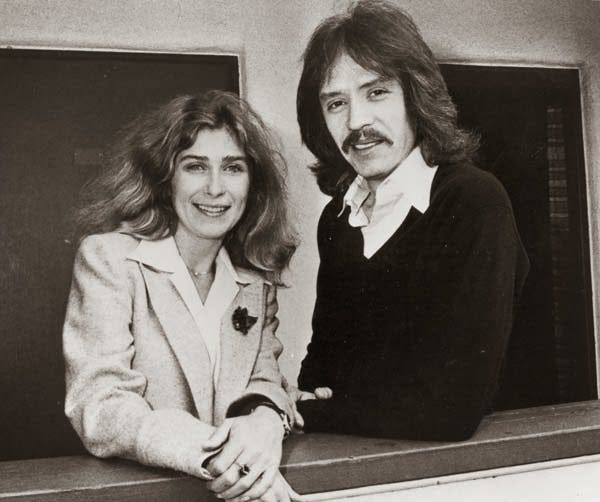
Debra Hill & John Carpenter
It’s hard to imagine in today’s world of prequels, tent-pole blockbusters, and themed universes, but movie sequels weren’t always a thing. In 1978, when burgeoning young New Yorker, John Carpenter made HALLOWEEN, the classic slasher we all know and love, the idea of a follow-up was not commonplace. In fact, the closest things to major studio sequels at the time were The Godfather Part I & II and the James Bond films, and those weren’t even true sequels. Originally titled, The Babysitter Murders, HALLOWEEN ended up raking in over $65 million dollars on a budget of $320,000. With numbers like that, it’s no surprise that Universal Studios wanted more, and fast.
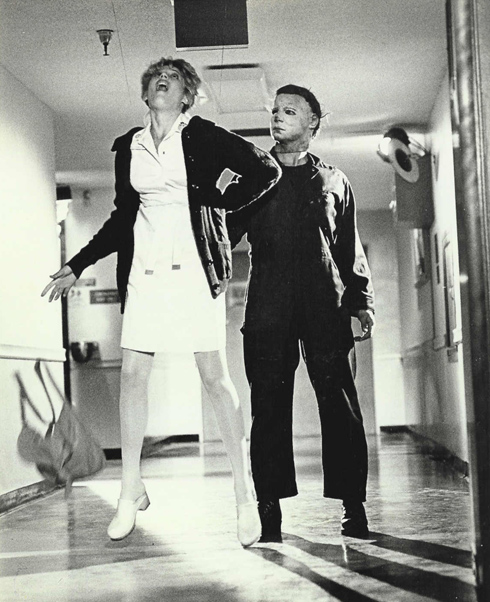
Halloween II
Always intended to bring the Michael Myers/Laurie Strode story to an end, John Carpenter and Debra Hill wrote a script for HALLOWEEN II that ended with the fiery demise of both the iconic and seemingly unstoppable, Michael Myers and his determined nemesis, Dr. Samuel Loomis. Although it received mixed reviews upon its release, Universal relished in its $25 million-dollar success. It wasn’t long before the desire for a Hollywood hat-trick became too much to ignore. Enter HALLOWEEN III.
In retrospect, the film’s worst enemy was its title. Close your eyes and imagine yourself in the shoes of Carpenter and Hill. The pressure is on to deliver the financial success of the fist two films, but as artists, your creative juices balk at supplying more of the same. What Carpenter and team wanted after HALLOWEEN II was a franchise alright, but not a Michael Myers franchise. They envisioned their sophomore follow-up as a Halloween-themed franchise, with an original Horror feature released annually, celebrating the dark allure of the October season. Genius, right? Sure, Myers was an indelible character who would go on to earn a place in the annals of Horror fandom, but remember, this was the early eighties. There was much more to be frightened of than one man with a knife. Computer technology was revealing itself to be an increasingly necessary, yet mysterious monster. Capitalism was turning global, with corporations realizing that profits don’t care about borders and anyone, anywhere could be hooked with the right buzz-word or jingle. The chills from broad scary themes like these drove Carpenter to reach out to Nigel Kneale, a British writer known for radio plays, serials and films featuring Bernard Quartermass, a Scientist who fought for Humanity’s survival from sinister forces, both human and alien.
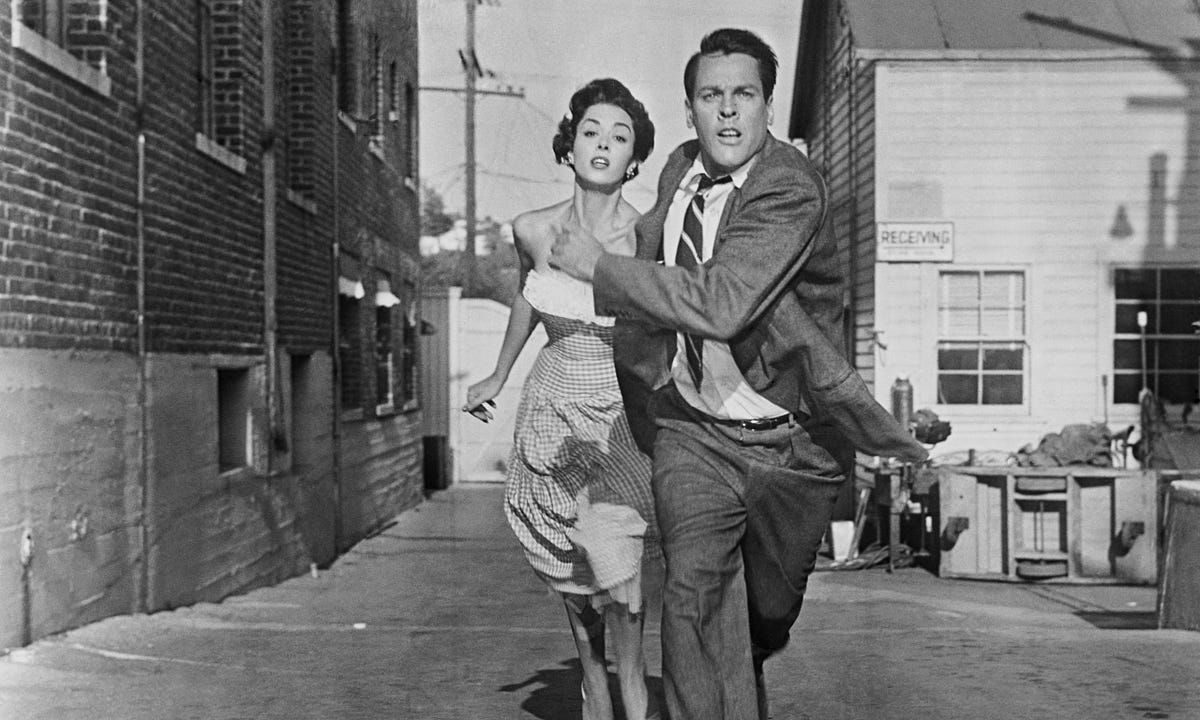
Invasion of the Body Snatchers, 1956
The screenplay Kneale submitted delved deep into the elements of mass deception and paranoia, rather than what he called, typical “Horror for Horror’s sake”. At this point, it should be mentioned that a major influence on HALLOWEEN III was Director Don Siegal’s 1956 classic, INVASION OF THE BODY SNATCHERS. Such homage is readily apparent in HALLOWEEN III, where a small group of heroes attempt to thwart an impending worldwide psychosis. Even though Carpenter, Hill and HALLOWEEN Production Designer-turned-Director Tommy Lee Wallace described Kneale’s draft as “brilliant and deeply, darkly grim”, the consensus was it needed work. Eventually, Nigel Kneale left the production, leaving Wallace and Carpenter to dial up the scares, lay on the gore and iron out the films chilling and unforgettable ending. For those of you who have seen the film, you’ll likely agree its an intense whopper. Needless to say, the studio pressured Carpenter and crew for an ending more upbeat, but kudos to Wallace and Carpenter for pushing back and delivering a dark and harrowing conclusion some would compare with 2007’s THE MIST.
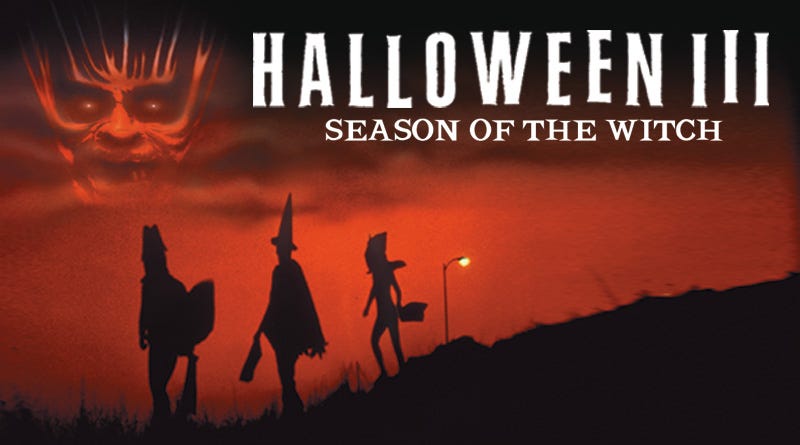
Released on October 22nd, 1982 HALLOWEEN III was a Horror mystery whose story began with a single murder and grew to an elaborate nightmare fueled by the madness of one man determined to resurrect an ancient curse by sacrificing millions of children. Creepy, right? Although it made over $14 million at the box office on a $2.5 million dollar budget, the film was deemed a commercial failure. Such negative feedback is surprising, given that by today’s independent film standards, profits more than five times a budget would be considered a win. In the end, even its critics agreed that it came down to Marketing. How does a major studio sell a unique twist on an existing and already popular idea? In this case, they didn’t. Slapped together with the “III” title and a non-existent advertising strategy, HALLOWEEN III never stood a chance. As it was then and as it still is today, America, and the world, were left looking for its easily identifiable antagonist, stubbornly wondering, Where in the hell was Michael?
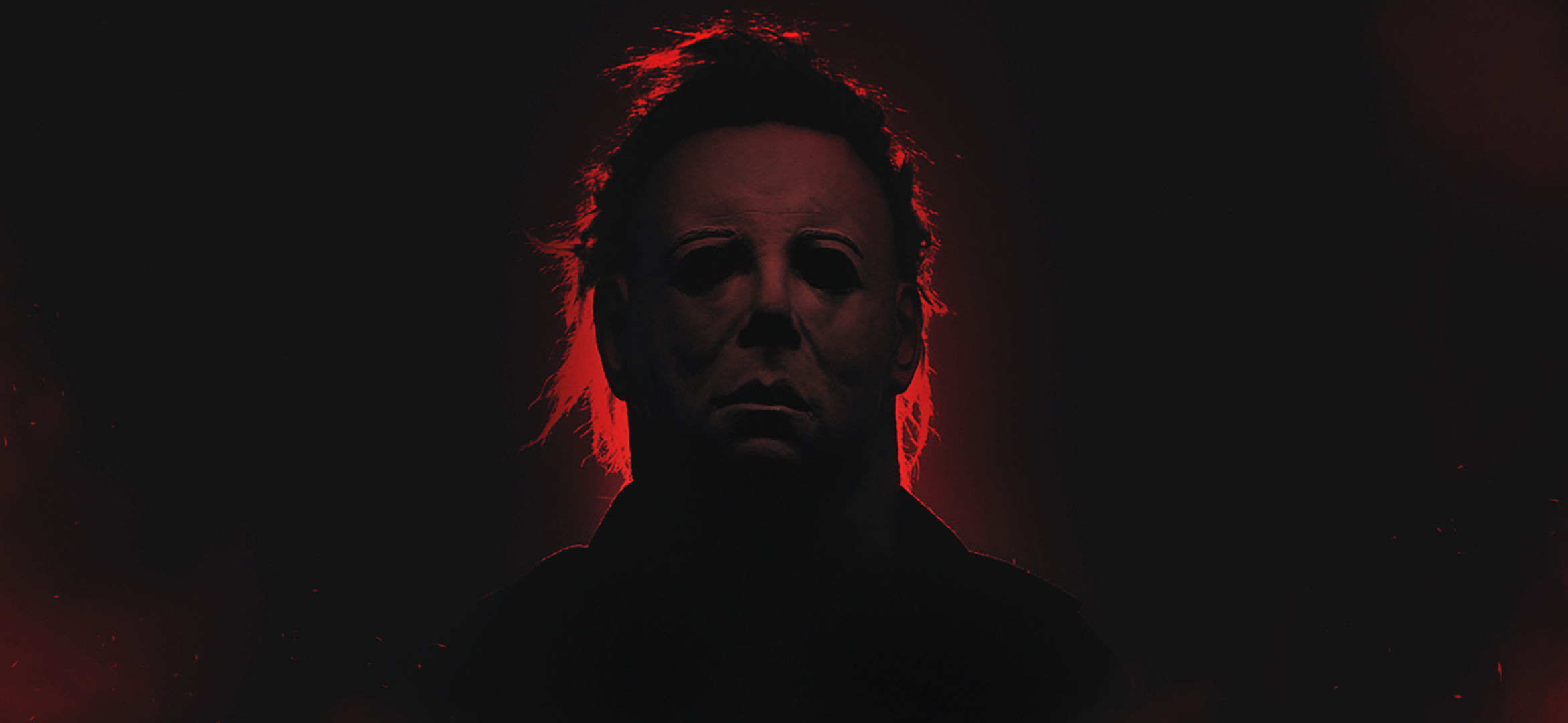
Your favorite Boy Next Door: Michael Myers
It would be six long years before Hollywood would plunge into Michael Myers territory again, and for what else? A sequel. Having learned the lesson that creativity and originality don’t always spell profits, Universal and Moustapha Akkad, Executive Producer of the original HALLOWEEN, would embrace film’s lowest common denominator: the rehash. At this point, John Carpenter and Debra Hill has sold their rights to the series and with a Hollywood Writer’s strike looming, 1988’s HALLOWEEN IV: THE RETURN OF MICHAEL MYERS not only spelled it out for audiences, the screenplay itself was banged out in just eleven days.
With a wild story that featured unexplained daughters and nieces of Michael Myers and almost five minutes of exposition in the opening six, HALLOWEEN IV did what it was supposed to do: win the first weekend and milk the cash-cow. With money doing all the talking, HALLOWEEN V: THE REVENGE OF MICHAEL MYERS was rushed into production only a year later, and actually started filming without a completed script. Even with the dedicated performances of Donald Pleasence and future “scream-queen” Danielle Harris, HALLOWEEN V was, in the end, a formulaic slasher with a dotted-line connection to the original by way of a title card that read: “Moustapha Akaad Presents”. But this was Hollywood. Even though the registers weren’t ringing as much, they were still ringing. HALLOWEEN VI was inevitable. There was only one thing that could stop this train: Lawyers.
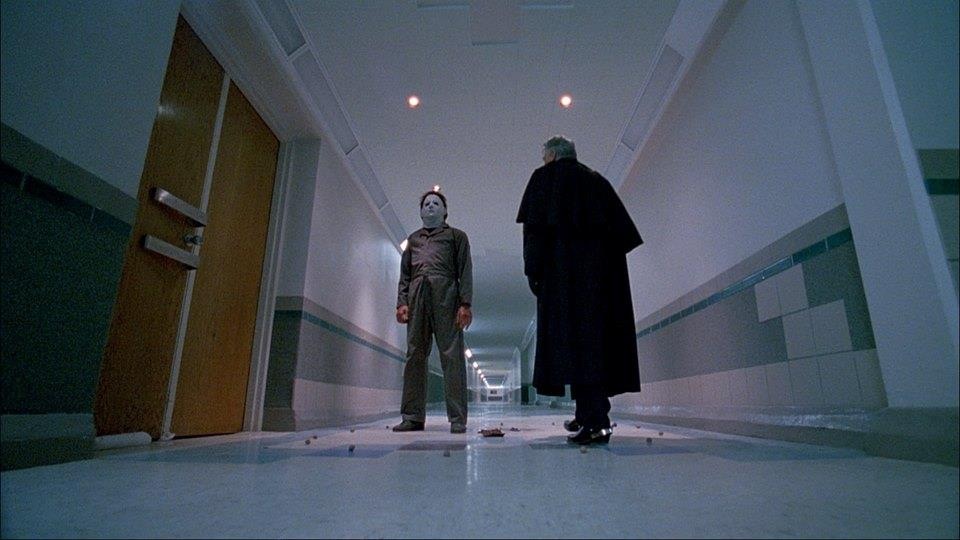
Halloween VI
Although a sixth Halloween film was always planned, things were delayed due to legal skirmishes and studio infighting and it was Miramax Films, via its Dimension Films division, that eventually bought the rights to the series. By this time, the Michael Myers story had been twisted beyond recognition, and now incorporated Druid cults, Men in Black, stolen babies and bizarre curses. Tied up in this labyrinth were a grown-up Tommy Doyle, played by Paul Rudd, and a returning Donald Pleasance, who would sadly pass away during re-shoots. Reviews for 1995’s HALLOWEEN VI: THE CURSE OF MICHAEL MYERS were ripe with synonyms, from “bland” and “hamfisted” to labeling it, “the worst in the series”. At least we got Paul Rudd.
By now, a nice round number of years had passed since the release of the original HALLOWEEN. Given that the series still had money-making potential, the producers had a decision to make: keep wringing out a story from the path they were on, or start over. Thankfully, better heads prevailed, two of them being the original creator and star, John Carpenter and Jamie Lee Curtis. Although Carpenter would leave the production, he left his mark on its development. That sensibility, combined with Curtis’ guiding hand and an early treatment and rewrites from nineties wunderkind, Kevin Williamson (Scream), this rehash at least had firm footing, even though it was saddled with the worst title ever. HALLOWEEN H20: 20 YEARS LATER opened in August of 1998 and earned $85 million, making it the biggest success of the series. But is it good? Well, given that 4, 5 and 6 were so dismal, H20 definitely had a strong head start. With profits like these, Michael could finally put down his knife and relax, right? Wrong. Cue the death kneel.
Jamie Lee Curtis was contractually obligated to appear for at least 30-seconds in HALLOWEEN: RESURRECTION, the 2002 mess that was the 8th film in the HALLOWEEN series. Rick Rosenthal of HALLOWEEN II fame limped back to the Director’s chair, Dimension Films third choice to lead this funeral march. Plagued by re-shoots, delayed release dates and unnecessary subplots, the finished film featured an annoying cast of nobodies at the time, and a story that had Curtis incarcerated for, get this, decapitating the wrong guy. In simple terms, RESURRECTION was a Coffin begging for a Nail.
Michael’s mask was finally hung up.
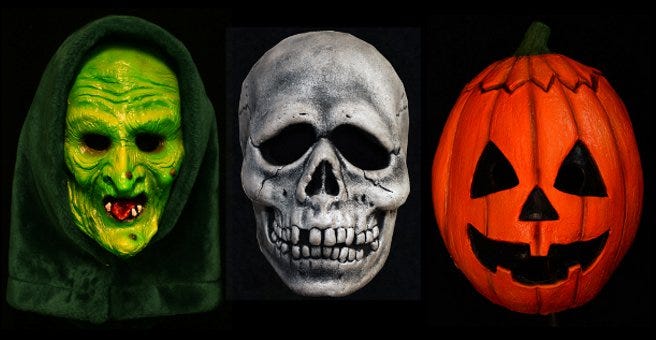
The Masks of HALLOWEEN III: Season of the Witch
In the original screenplay for John Carpenter’s HALLOWEEN, Michael Myers was referred to only as The Shape. In hindsight, he should have been called The Swag because it only takes a cursory look across the history of the HALLOWEEN series to see that money was its master. Of all the films, only two of the eight, HALLOWEEN and HALLOWEEN III, came from a place of pure creativity and original art. Sure, everyone wants a hit, but with HALLOWEEN III, John Carpenter, Debra Hill and Tommy Lee Wallace wanted to scare you with an innovative idea. Is HALLOWEEN III a Rosemary’s Baby or a Psycho? No. But does it deserve to be ignored or lambasted as the HALLOWEEN mistake?
I, for one, say, Hell no.
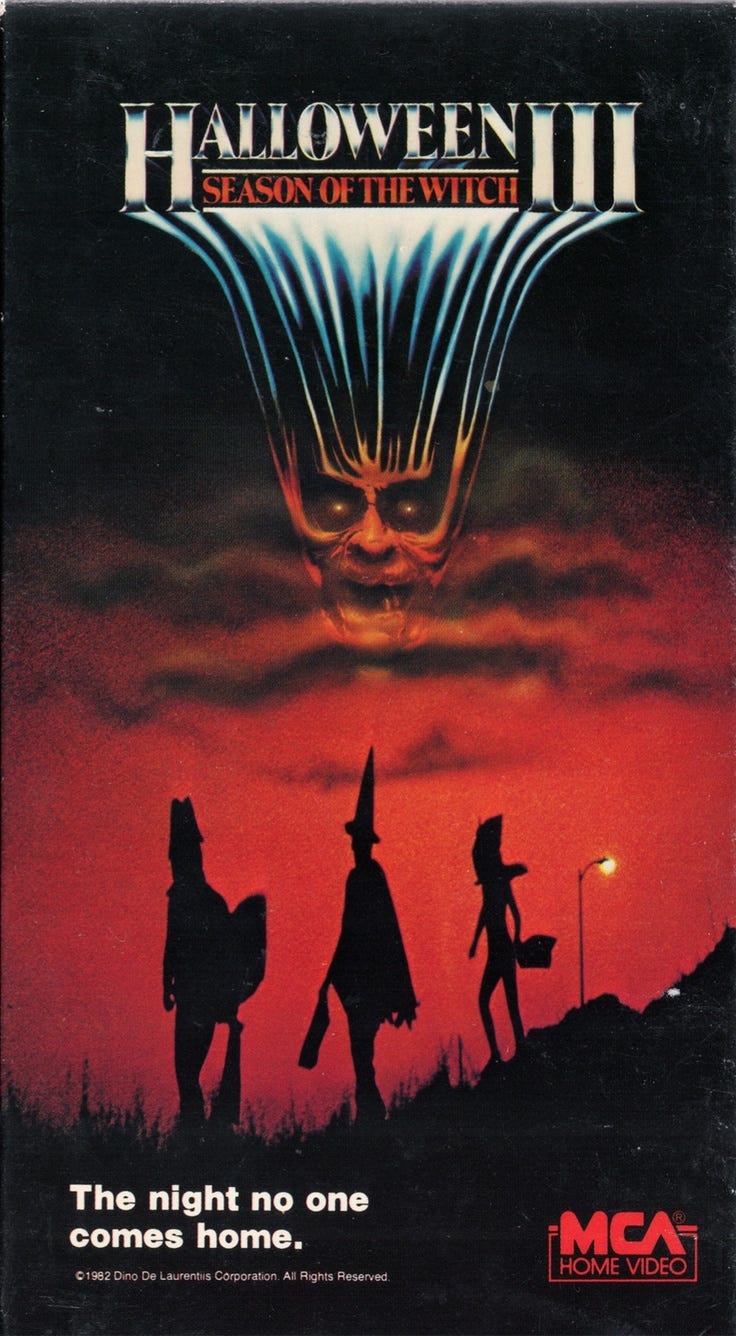
Halloween III: Season of the Witch – 1982
It’s been almost 40 years since He Came Home. John Carpenter’s HALLOWEEN is a masterpiece of Horror cinema and although Michael Myers may rise again in reboots, his sequels seem to have finally been snuffed out. With that in mind, try putting the knife down this Halloween season and settling into HALLOWEEN III. And like you would do with any scary Horror film, remind yourself it’s only a movie.
Give this one a break.

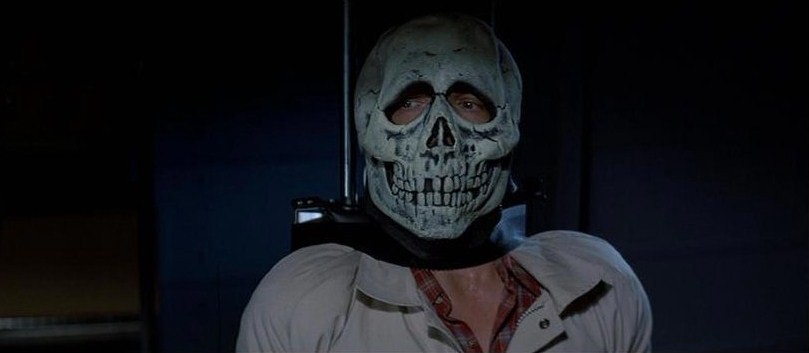
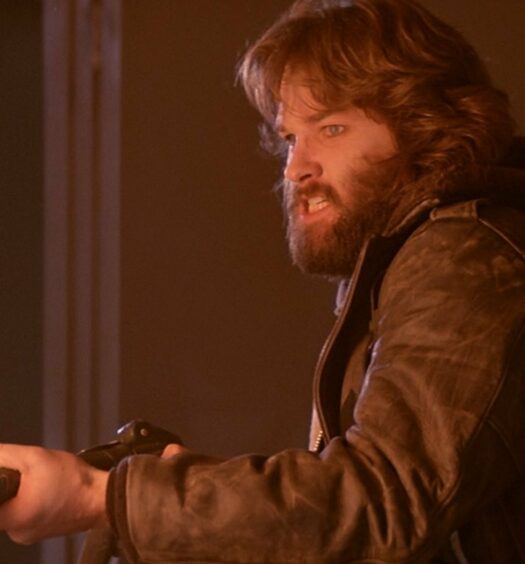
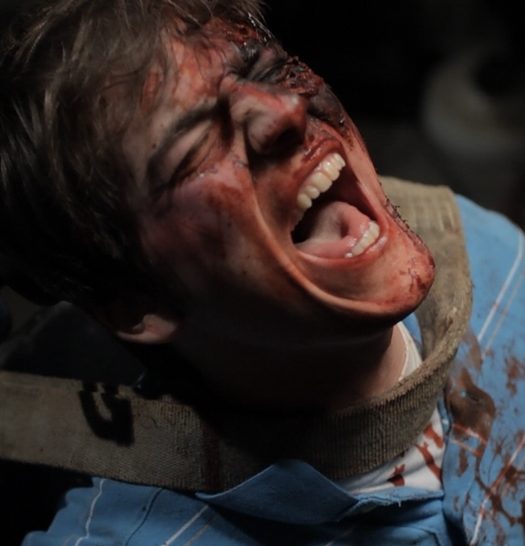




























October 30, 2017
Great article!
October 30, 2017
Thanks, Jordan! Glad you liked it. Feel free to share & let the debate ensue!